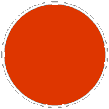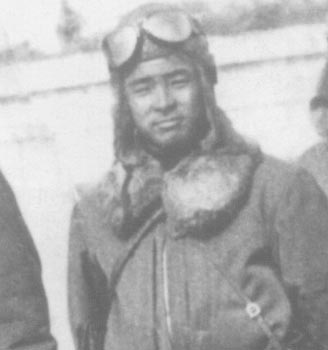Japan

Captain Kosuke Kawahara
Japan

Captain Kosuke Kawahara

1913 – 25 March 1938
Kosuke Kawahara was born in Tokyo 1913 as the second son of Lieutenant General Tuyoshi Kawahara ( a famous commander who led a volunteer corps in the Rehe Operation).
He graduated from the 8th Tokyo Middle School. He then went through the Junior Army Military Academy followed by the Army Military Academy. He passed out of the latter in June 1937 with the 47th course.
In June 1936, he completed pilot training at the Tokorozawa Flying School, then joining the 5th Rentai at Tachikawa.
He was a talented student and was awarded watches, both on graduation from the Academy, and again when graduating from Tokorozawa, being considered one of the outstanding entrants to Army aviation.
When the China Incident occurred in July 1937 Second Lieutenant Kawahara served with the 1st chutai (the ‘Kato chutai’) of the 2nd Hiko Daitai (flight battalion), which moved to the northern China.
Up until 3 April 1938, this unit used the Kawasaki Ki-10 Type 95 ‘Perry’ biplane fighter.
In October 1937, he was promoted to First Lieutenant.
During the afternoon on 25 October 1937, First Lieutenant Kawahara’s flight from the 1st chutai of the 2nd Daitai (Ki-10s) flew as escort to First Lieutenant Mitsugu Sawada, who flew as a courier to Tsu-Chang with an unarmed aircraft. Over the front-line they met a Chinese Vought Corsair biplane, which was shot down by Kawahara.
In the evening, Sawada returned from Tsu-Chang and again they met a Corsair over the front-line, which was jointly shot down by Kawahara and Sergeant Major Hiroshi Sekiguchi.
Of the three Vought Corsairs of the 7th RG sent on a reconnaissance mission to Anyang, only one returned at 18:00. The other two (nos. 602 and 1205) were lost together with the four crew; Wang Kan and Han Shih-Yu and Ting Chia-Hsien and Wang Wen-Hsiu.
During the afternoon on 25 October 1937 First Lieutenant Kawahara’s flight from the 1st chutai of the 2nd Daitai (Ki-10s) flew as escort to First Lieutenant Mitsugu Sawada, who flew as a courier to Tsu-chang with an unarmed aircraft. Over the front-line they met a Chinese Vought Corsair biplane, which was shot down by Kawahara.
In the evening Sawada returned from Tsu-chang and again they met a Corsair over the front-line, which was jointly shot down by Kawahara and Sergeant Major Hiroshi Sekiguchi.
The 1st chutai of the 2nd Daitai (Ki-10s) took part in the first combat over Luoyang on 30 January 1938 when eight of the unit’s fighters escorted 6th Daitai bombers over Luoyang. The fighters were engaged in combat with I-15bis and returned claiming 13 shot down for the loss of Sergeant Toshio Kawai (Sho-1), who was shot down and killed. Tateo Kato claimed two victories while First Lieutenant Kawahara, who led the third element of the 1st chutai fought for 15 minutes against intercepting I-15bis, claiming three shot down. First Lieutenant Mitsugu Sawada claimed an additional three victories.
On 8 March 1938 the 2nd Daitai (Ki-10s) took off from Yuncheng for a bomber escort mission to Sian. Over Sian, eight Ki-10s of the 2nd chutai claimed three Gladiators and three Polikarpov I-15s shoot down. The three Gladiators were claimed by Captain Juichi Morimoto, Warrant Officer Umekawa and Sergeant Major Hatanaka. One of the I-15s was claimed by Lieutenant Yonesuke Fukuyama, who pursued an I-15 into a valley near Sian at low altitude and shot it down for his first victory. A second I-15 was claimed by Sergeant Tokuya Sudo while flying as third pilot in First Lieutenant Iori Sakai’s section. The third I-15 was claimed by Segeant Majors Suzuki and Aito Kikuchi, who had turned back when their shotai mate, Tokuya Sudo’s aircraft had developed engine trouble.
Only five Chinese aircraft were able to take off to intercept the Japanese raid on Sian airfield but none of them were shot down. However, one SB and one I-15 under repair and another I-15 were hit on the ground.
While returning from Sian, the 1st chutai encountered four Chinese I-152s. Captain Tateo Kato claimed one and First Lieutenant Kawahara claimed one while the chutai finished off the rest.
During the day, a combined group of twelve I-15bis from the 17th and 25th PS flew from Sian to attack Fenglingdu. After dropping 25kg bombs, they ran into Japanese fighters. They lost four I-15bis when the pilots Rong Guang-Cheng and Lo Chun-Tun were shot down and killed, Liu Jin-Guang and Liu Yi-Ji were wounded and Zhou Zin-Gyan parachuted. It is possible that these are fighters that run into to the 2nd Daitai.
Kawahara’s claim made him the Japanese Army Air Force’s first ace (in the Western tradition with five victories).
On 25 March 1938 the 1st chutai of the 2nd Daitai (Ki-10s), commanded by Captain Tateo Kato fought with Chinese I-152s over Guide. Although outnumbered 5 to 18 the Japanese pilots took a heavy tool of the Chinese aircraft. Captain Kato shot down four I-152s, Flight Sergeant Tanaka shot down two and Sergeant Major Hiroshi Sekiguchi shot down one.
First Lieutenant Kawahara (leading the second element) was seen to shoot down two and pursue a third to the ground, when his aircraft was hit from behind and burst into flames. He waved to his wingman, Sekiguchi, before diving into the ground. First Lieutenant Mitsugu Sawada shared in the destruction of a large aircraft. Also in this combat was Tanaka forced to make an emergency landing and Sekiguchi was badly wounded in the thigh but managed to land and being transported to hospital.
The 2nd chutai of the 2nd Daitai also took part in this combat claiming 9 more victories, one of these being claimed by Yonesuke Fukuyama. Totally the 2nd Daitai’s 16 fighters claimed 19 victories for the loss of Kawahara.
According to Chinese records it seems that at least the 3rd PG took part in this combat. They lost six I-15bis and got three pilots killed when they where attacked by 19 Kawasaki Type 95 (Ki-10) biplane fighters of the 2nd Daitai near Kwei-teh airfield (Koi-toh in Japanese).
On return Kato could not believe that such a brilliant pilot as First Lieutenant Kawahara had been lost, and waited at the airfield until sunset in the hope of his late return. Next day as a sign of mourning, he shaved off a much beloved moustache.
At the time of his death Kawahara was credited with 8 biplane victories.
Claims:
| Kill no. | Date | Time | Number | Type | Result | Plane type | Serial no. | Locality | Unit |
| 1937 | |||||||||
| 1 | 25/10/37 | p.m. | 1 | Corsair (a) | Destroyed | Ki-10 | Tsu-chang area | 2nd Hiko Daitai | |
| 25/10/37 | p.m. | ½ | Corsair (a) | Shared destroyed | Ki-10 | Tsu-chang area | 2nd Hiko Daitai | ||
| 1938 | |||||||||
| 2 | 30/01/38 | 1 | I-152 | Destroyed | Ki-10 | Luoyang area | 2nd Hiko Daitai | ||
| 3 | 30/01/38 | 1 | I-152 | Destroyed | Ki-10 | Luoyang area | 2nd Hiko Daitai | ||
| 4 | 30/01/38 | 1 | I-152 | Destroyed | Ki-10 | Luoyang area | 2nd Hiko Daitai | ||
| 5 | 08/03/38 | 1 | I-152 (b) | Destroyed | Ki-10 | Sian area | 2nd Hiko Daitai | ||
| 6 | 25/03/38 | 1 | I-152 (c) | Destroyed | Ki-10 | Guide area | 2nd Hiko Daitai | ||
| 7 | 25/03/38 | 1 | I-152 (c) | Destroyed | Ki-10 | Guide area | 2nd Hiko Daitai | ||
| 8 | 25/03/38 | 1 | I-152 (b) | Destroyed | Ki-10 | Guide area | 2nd Hiko Daitai |
Biplane victories: 8 and 1 shared destroyed.
TOTAL: 8 and 1 shared destroyed.
(a) Probably Vought Corsair from the 7th RG, which lost two aircraft (nos. 602 and 1205) during the day with their crews.
(b) It is possible that these were claimed in combat with a combined group of I-15bis from the 17th and 25th PS, which lost at least three aircraft when the pilots Song Gua-Cheng and Lo Chun-Tun were shot down, Liu Jin-Guang and Liu Yi-Ji were wounded and Zhou Zin-Gyan parachuted. 2nd Daitai claimed seven Polikarpovs and three Gladiators over Sian during a mission on this day.
(c) In this combat the 2nd Daitai totally claimed 19 victories for the loss of 1st Lieutenant Kawahara.
Sources:
Esa mezivalecneho obdobi vol.3 - Tomas Polak, 1996 Plastic Kits Revue 45/96, Ostrava, Czech Republic kindly provided by Ondrej Repka.
Historie 64.sentaj vol.1 - Jaroslav Novotny Jr, 1993 Plastic Kits Revue 16/93, Ostrava, Czech Republic kindly provided by Ondrej Repka.
Japanese Army Air Force Aces 1937-45 - Henry Sakaida, 1997 Osprey Publishing, London, ISBN 1-85532-529-2
Japanese Army Air Force fighter units and their aces 1931-1945 - Ikuhiko Hata, Yasuho Izawa and Christopher Shores, 2002 Grub Street, London, ISBN 1-902304-89-6
Soviet Fighters in the sky of China, Part II - Anatolii Demin, 2000 Aviatsiia Kosmonavtika 10 (translated by George M. Mellinger)
Additional information kindly provided by Edward Chan and Nick Millman.


